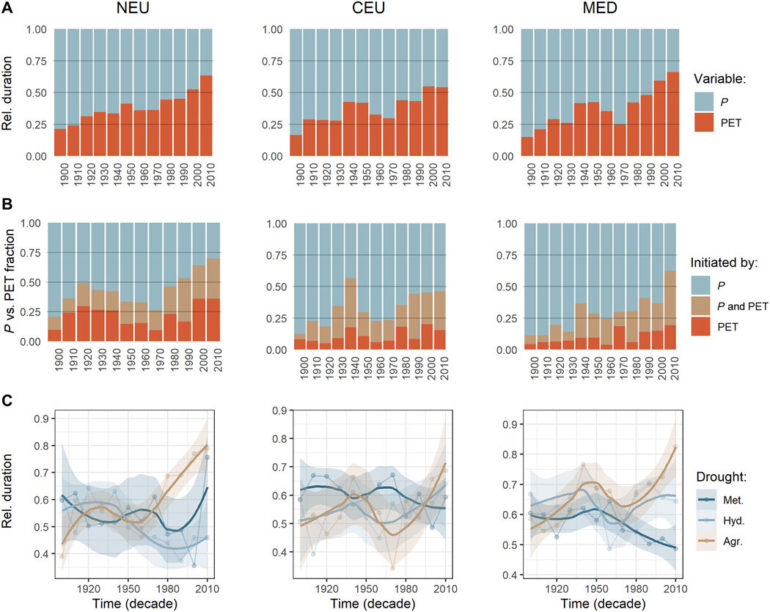A new study from the Czech University of Life Sciences Prague (CZU), Faculty of Environmental Sciences, has found that the rise of compound warm-season droughts in Europe is a dynamic, developing phenomenon.
Drought is one of the main threats to food security and ecosystem productivity. In recent decades, Europe has experienced a series of droughts that caused substantial socioeconomic losses and environmental impacts. The scientists from CZU asked whether there are similar characteristics in these droughts, especially when compared to the droughts that occurred further in the past. Answering this question is impossible with traditional single-index approaches, and research additionally suffers from short-term and often spatially inconsistent records.
The scientists have used a multidimensional, machine-learning-based clustering algorithm and the hydrologic reconstruction of European drought. They determined the dominant drought types and investigated the changes in drought typology. They report a substantial increase in shorter warm-season droughts that are concurrent with an increase in potential evapotranspiration. If such shifts persist, “then we will need new adaptive water management policies and, in the long run, we may observe considerable alterations in vegetation regimes and ecosystem functioning,” says principal researcher Dr. Yannis Markonis.
The researchers add that the rise of compound warm-season droughts in Europe is a dynamic, developing phenomenon. It has already affected ecosystem functioning and economic growth. A question that remains to be answered is whether this type of drought event will persist and become a common feature of European hydroclimate. The current trends in hydrological variables derived by scientists’ analysis support that this should be anticipated to occur. In this case, compound warm-season droughts will further increase agricultural water demand, affect vegetation, and enhance the probability of firestorms.
But the complexity of the drought phenomena should neither be underestimated nor be oversimplified. Long-term hydrological modeling coupled with data-driven classification provides a promising framework that comes with certain limitations and assumptions. Despite the constraints, the emerging pattern presented in their study is a crucial first step in understanding how the drought has changed in the past decades and in establishing new adaptive water management policies to mitigate the risks of future hydroclimatic hazards.
The study, “The rise of compound warm-season droughts in Europe,” is published in Science Advances.
A better way to understand drought
More information:
Yannis Markonis et al, The rise of compound warm-season droughts in Europe, Science Advances (2021). DOI: 10.1126/sciadv.abb9668
Provided by
Charles University Environment Center
Citation:
Study: Drought is rising in Europe (2021, August 12)
retrieved 12 August 2021
from https://phys.org/news/2021-08-drought-europe.html
This document is subject to copyright. Apart from any fair dealing for the purpose of private study or research, no
part may be reproduced without the written permission. The content is provided for information purposes only.



